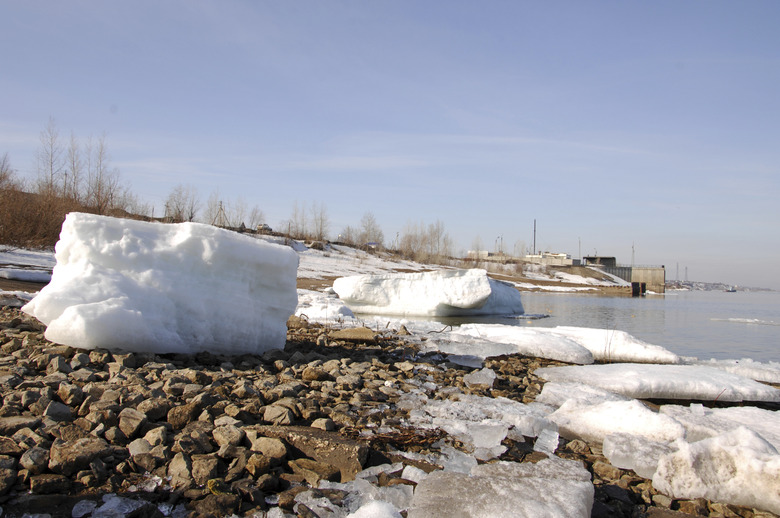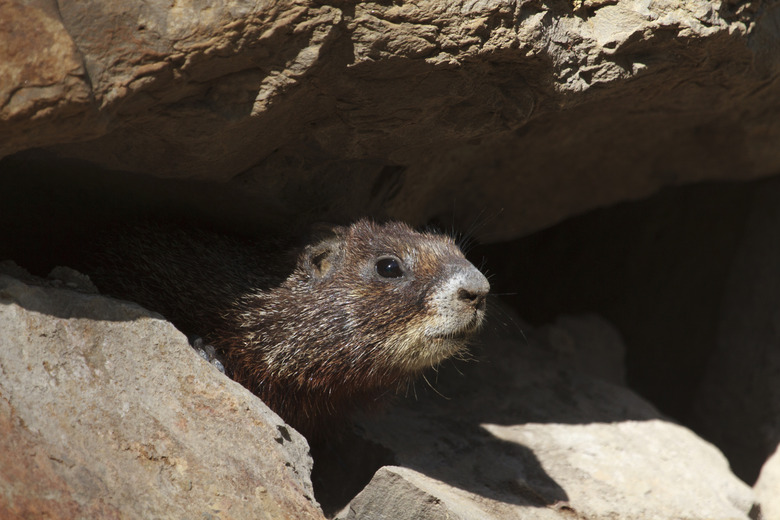What Is Biological Weathering?
Weathering refers to any process by which rock is broken down at the surface level. This may refer to ordinary wear and tear or the cracking and splitting of the rock surface. This breakdown can lead to large structural changes and destruction of rock, known as erosion.
TL;DR (Too Long; Didn't Read)
Biological weathering specifically refers to the weathering as caused by organisms — plants, animals, and bacteria.
Biological Weathering vs. Physical and Chemical Weathering
Biological Weathering vs. Physical and Chemical Weathering
The three different types of weathering are physical, chemical and biological. Physical weathering is caused by mechanical forces, without any change to the makeup of the rock. For example, water can freeze inside small holes in rock, causing the rock to split and crack. Chemical weathering is caused by reactions among minerals in the rock and outside chemicals. Perhaps the best-known type of chemical weathering is acid rain, precipitation that contains acids that corrode the surface of rock.
Biological weathering only refers to weathering caused by organisms — animals, plants, fungi and microorganisms such as bacteria. While certain forms of biological weathering, such as the breaking of rock by tree roots, are sometimes categorized as either physical or chemical, biological weathering can be either physical or chemical. Biological weathering can work hand in hand with physical weathering by weakening rock or exposing it to the forces of physical or chemical weathering.
Trees and Other Plants
Trees and Other Plants
You've probably seen biological weathering in action if you've ever seen a sidewalk that's cracked by a tree root. The roots of trees, grasses and other plants can grow into small spaces and gaps in rock. When these roots grow, they exert pressure on the rock around them, causing the gaps to widen or even crack. Plant roots can also weather rock through chemical processes. When dead roots decompose, they release carbon dioxide; this is sometimes converted into carbonic acid, which chemically breaks down rock into soil.
Microorganisms and Lichens
Microorganisms and Lichens
Not all biological weathering occurs visibly. Many microorganisms in the soil and on the surface of rock can contribute. Some bacteria derive nutrition by taking a combination of nitrogen from the air and minerals — such as silica, phosphorous and calcium — from rock. By removing these minerals, the rock is weakened and is further subject to other weathering forces such as wind and water. Lichens, symbiotic colonies of fungi and microscopic algae that grow on rock, also contribute to weathering. The fungi in a lichen produce chemicals that break down the minerals in the rock. The algae, like the bacteria, use these minerals for nutrition.
Animal Activity
Animal Activity
Animals can also contribute to weathering. Animals can walk on rock or disturb it, causing landslides that scrape or smooth rock surfaces. Burrowing animals such as badgers and moles can break up rock underground or bring it to the surface, where it is exposed to other weathering forces. Some animals directly burrow into the rock. The piddock shell is a mollusk, closely related to the clam, that uses its shell to cut a hole in rock, where it lives.
As animals, humans also contribute to biological weathering. Construction, mining and quarrying break up and disturb large sections of rock. Foot traffic over rock causes friction that breaks off tiny particles. Over a long period, foot traffic can cause significant wear and tear on rock surfaces.
Cite This Article
MLA
Zamboni, Jon. "What Is Biological Weathering?" sciencing.com, https://www.sciencing.com/biological-weathering-5633317/. 25 July 2018.
APA
Zamboni, Jon. (2018, July 25). What Is Biological Weathering?. sciencing.com. Retrieved from https://www.sciencing.com/biological-weathering-5633317/
Chicago
Zamboni, Jon. What Is Biological Weathering? last modified August 30, 2022. https://www.sciencing.com/biological-weathering-5633317/




